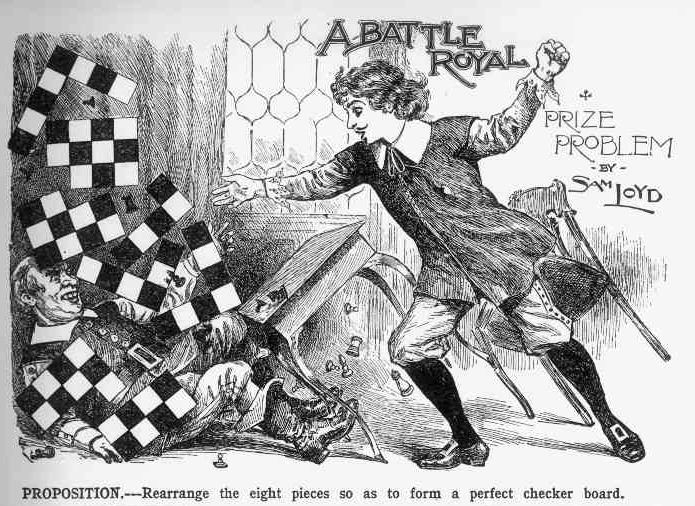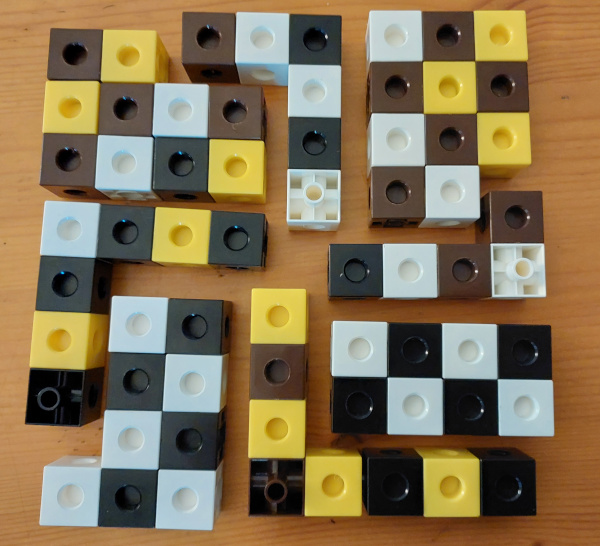Recompon el tauler d'escacs a partir dels 8 fragments.
Sam Loyd (1841-1911), is one of the most renowned puzzle creators with a characteristic point of wit and humour. Martin Gardner called it "America's greatest puzzler." In his book Cyclopedia of 5000 Puzzles this puzzle appears.
Loyd tells us the anecdote of a French prince facing an imminent mate when he played a game of chess he chose to break the board in his head
- Hotel Area: Sala Martin Gardner
- Minimum age: from 6 years old.
- Required time: 5-10 minutes.
- Number of participants: 1 person or more
- Keywords: Algorithm
- Taxonomy:

Resolució
Aquest trencaclosques és particularment interessant: com podeu comprovar si s’intenta resoldre col·locant les peces progressivament canviant-les quan es veu que no encaixen, la resolució és molt difícil.
En canvi, amb un estudi prèvi de les peces, s’aconsegueix una resolució ordenada i espectacularment elegant:
- Classifiqueu les peces en dos grups. Per una costat tenim les peces que tenen forma de L i per l’altra la resta.
- Ordeneu els dos grups, poseu les peces amb la mateixa orientació. Comproveu que d’una peça a l’altra hi ha una diferència d’una casella.
- Aparelleu les peces compensant les mides. És a dir per exemple peça gran d’un grup amb la petita de l’altre grup.
- Amb cadascuna de les 4 parelles, heu de formar una mateixa silueta de 16 caselles formada per un rectangle 3×5 més una casella a un extrem.
- Amb aquestes 4 peces formeu el tauler 8×8

